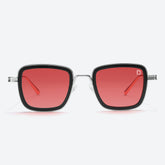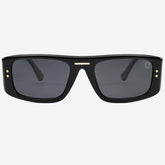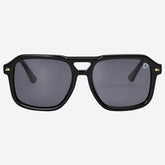Are Polarized Sunglasses Better for Your Eyes?
Sunglasses are not only a fashion accessory, but also a necessity for protecting your eyes from the harmful effects of ultraviolet (UV) rays and glare. However, not all sunglasses are created equal. Some sunglasses have polarized lenses, which can offer additional benefits for your vision and comfort. But what are polarized sunglasses, and are they better for your eyes than regular sunglasses? In this article, we will answer these questions and help you choose the best pair of sunglasses for your needs.
What are polarized sunglasses?
Polarized sunglasses are sunglasses that have lenses that filter out horizontal light waves, which are the main cause of glare. Glare is the bright and harsh light that reflects off shiny surfaces, such as water, snow, glass, or metal. Glare can reduce your visibility, cause eye strain, headaches, and fatigue, and even increase the risk of accidents while driving, skiing, boating, or fishing.
Polarized sunglasses can eliminate or reduce glare, making the images you see clearer and more comfortable. They can also enhance the contrast and color perception of your vision, improving your visual acuity and depth perception.
How do polarized sunglasses work?
Light travels in waves that vibrate in different directions. When light hits a flat surface, it tends to reflect in a horizontal direction, creating glare. Polarized lenses have a special coating that acts like a filter, blocking out the horizontal light waves and allowing only the vertical ones to pass through. This way, polarized lenses reduce or eliminate the glare that reaches your eyes.
How do I know if my sunglasses are polarized?
There are a few simple ways to test if your sunglasses are polarized or not. One way is to look at a reflective surface, such as a car window, a mirror, or a water body, with your sunglasses on. Then, tilt your head to the left or right and see if the glare changes or disappears. If it does, then your sunglasses are polarized. If it doesn’t, then they are not.
Another way is to look at a digital screen, such as a smartphone, a tablet, or a computer monitor, with your sunglasses on. Then, rotate your sunglasses 90 degrees and see if the screen becomes darker or less visible. If it does, then your sunglasses are polarized. If it doesn’t, then they are not.

Are polarized sunglasses better for your eyes?
Polarized sunglasses can offer many benefits for your eyes, especially if you spend a lot of time outdoors or in bright environments. Some of the advantages of polarized sunglasses are:
- They can reduce or eliminate glare, which can improve your visibility and comfort, and prevent eye strain, headaches, and fatigue.
- They can enhance the contrast and color perception of your vision, which can improve your visual acuity and depth perception, and make the scenery more vivid and beautiful.
- They can block out 100% of the harmful UV rays, which can protect your eyes from sun damage, such as cataracts, macular degeneration, and eye cancer.
However, polarized sunglasses are not perfect for every situation. Some of the drawbacks of polarized sunglasses are:
- They can make some LCD screens, such as those in some car dashboards, GPS devices, ATMs, or digital watches, harder to see, as they may appear black or distorted when viewed through polarized lenses.
- They can interfere with some visual tasks that require accurate perception of light and shade, such as skiing, golfing, or photography, as they may alter the natural contrast and color of the environment.
- They can be more expensive than regular sunglasses, as they require more advanced technology and materials to produce polarized lenses.
To compare polarized sunglasses and regular sunglasses, let’s look at their main features and differences:
Polarized sunglasses
- Have lenses that filter out horizontal light waves, reducing or eliminating glare
- Enhance the contrast and color perception of your vision, improving your visual acuity and depth perception
- Block out 100% of the harmful UV rays, protecting your eyes from sun damage
- Can make some LCD screens harder to see, as they may appear black or distorted
- Can interfere with some visual tasks that require accurate perception of light and shade, such as skiing, golfing, or photography
- Can be more expensive than regular sunglasses
Regular sunglasses
- Have lenses that reduce the overall brightness of the light, but do not filter out horizontal light waves, leaving glare intact
- Do not affect the contrast and color perception of your vision, leaving your visual acuity and depth perception unchanged
- May or may not block out 100% of the harmful UV rays, depending on the quality and type of the lenses
- Do not affect the visibility of LCD screens, as they do not alter the polarization of the light
- Do not interfere with visual tasks that require accurate perception of light and shade, as they do not alter the natural contrast and color of the environment
- Can be cheaper than polarized sunglasses
Polarized sunglasses vs regular sunglasses: Pros and Cons
To help you decide whether polarized sunglasses or regular sunglasses are better for you, let’s summarize their pros and cons in a table:
|
Feature |
Polarized sunglasses |
Regular sunglasses |
|
Glare reduction |
Excellent, as they filter out horizontal light waves |
Poor, as they do not filter out horizontal light waves |
|
Contrast and color enhancement |
Good, as they improve the visual acuity and depth perception |
None, as they do not affect the visual acuity and depth perception |
|
UV protection |
100%, as they block out all the harmful UV rays |
Variable, depending on the quality and type of the lenses |
|
LCD screen visibility |
Poor, as they may make some LCD screens appear black or distorted |
Good, as they do not affect the polarization of the light |
|
Light and shade perception |
Poor, as they may alter the natural contrast and color of the environment |
Good, as they do not alter the natural contrast and color of the environment |
|
Price |
Higher, as they require more advanced technology and materials |
Lower, as they require less advanced technology and materials |
As you can see, polarized sunglasses and regular sunglasses have different strengths and weaknesses, and there is no definitive answer to which one is better for your eyes. It depends on your personal preferences, needs, and budget. You should weigh the pros and cons of each type of sunglasses, and choose the one that suits you best.

Polarized sunglasses are ideal for situations where you are exposed to a lot of glare, such as:
- Driving, as they can reduce the glare from the road, other cars, or traffic signs, improving your safety and comfort
- Fishing, boating, or water sports, as they can reduce the glare from the water, allowing you to see below the surface and spot fish, rocks, or other objects
- Skiing, snowboarding, or winter sports, as they can reduce the glare from the snow, enhancing your visibility and contrast
- Hiking, biking, or outdoor activities, as they can reduce the glare from the sun, the sky, or the vegetation, making the scenery more vivid and beautiful
However, polarized sunglasses are not recommended for situations where you need to see LCD screens or accurate light and shade, such as:
- Using some car dashboards, GPS devices, ATMs, or digital watches, as they may appear black or distorted through polarized lenses
- Skiing, golfing, or photography, as they may alter the natural contrast and color of the environment, affecting your performance or quality of your images
When choosing a pair of polarized sunglasses, you should consider the following factors:
The quality and type of the lenses
as they determine the level of polarization, UV protection, durability, and clarity of your vision. You should look for lenses that have a high-quality polarizing filter, block out 100% of the UV rays, are scratch-resistant and impact-resistant, and have an anti-reflective coating to prevent back-glare.
The color and tint of the lenses
as they affect the amount of light transmission, contrast, and color perception of your vision. You should choose a color and tint that suit your preferences and needs, depending on the environment and activity you are engaging in. Some of the common colors and tints are:
Gray
which is neutral and does not alter the natural colors, but reduces the overall brightness and glare. It is suitable for general use and sunny conditions.
Brown
which enhances the contrast and depth perception, but may distort some colors, such as blues and greens. It is suitable for cloudy or hazy conditions, and activities such as golfing or fishing.
Green
which improves the contrast and color perception, but may reduce the brightness and glare slightly less than gray. It is suitable for general use and moderate to bright conditions.
Yellow
which increases the contrast and brightness, but may cause color distortion and eye fatigue. It is suitable for low-light or foggy conditions, and activities such as skiing or cycling.
The size and shape of the frames
as they affect the coverage, comfort, and style of your sunglasses. You should choose frames that fit your face well, cover your eyes and the surrounding area completely, and match your personal taste and fashion sense. You should also look for frames that have rubber nose pads and temple tips, which can prevent your sunglasses from slipping or falling off.

Conclusion
Sunglasses are essential for protecting your eyes from the harmful effects of ultraviolet (UV) rays and glare. However, not all sunglasses are the same. Some sunglasses have polarized lenses, which can offer additional benefits for your vision and comfort. Polarized sunglasses can reduce or eliminate glare, enhance the contrast and color perception of your vision, and block out 100% of the UV rays. However, polarized sunglasses are not suitable for every situation. They can make some LCD screens harder to see, interfere with some visual tasks that require accurate light and shade perception, and be more expensive than regular sunglasses. Regular sunglasses can reduce the overall brightness of the light, but do not filter out horizontal light waves, leaving glare intact. They do not affect the contrast and color perception of your vision, but may or may not block out 100% of the UV rays, depending on the quality and type of the lenses. They do not affect the visibility of LCD screens or the natural contrast and color of the environment, and can be cheaper than polarized sunglasses. Therefore, you should choose a pair of sunglasses that meets your needs and preferences, depending on the environment and activity you are engaging in. Polarized sunglasses and regular sunglasses have different strengths and weaknesses, and there is no definitive answer to which one is better for your eyes. You should weigh the pros and cons of each type of sunglasses, and choose the one that suits you best.





